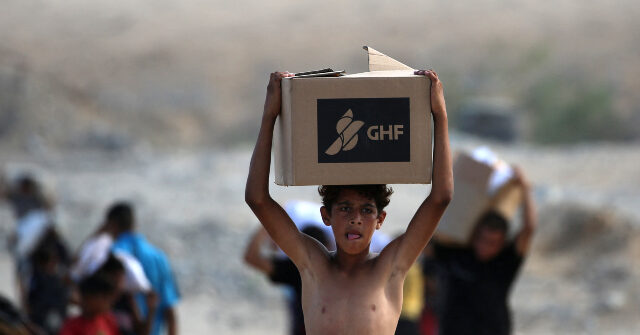“From the outset, GHF’s goal was to meet an urgent need, prove that a new approach could succeed where others had failed, and ultimately hand off that success to the broader international community,” GHF Executive Director John Acree said.
“With the creation of the Civil-Military Coordination Center (CMCC) and a rejuvenated engagement of the international humanitarian community, GHF believes that moment has now arrived,” he said.
The CMCC was created in mid-October by the U.S. Central Command (CENTCOM) and now includes 21 contributing member nations and 20 organizations. Located in southern Israel, the CMCC monitors security hazards in Gaza, coordinates humanitarian relief efforts, and supports postwar reconstruction efforts. Under its auspices, about 900 trucks full of relief supplies are now entering Gaza every day.
“At a critical juncture, we are proud to have been the only aid operation that reliably and safely provided free meals directly to Palestinian people in Gaza, at scale and without diversion,” Acree said.
“From our very first day of operations, our mission was singular: feed civilians in desperate need. We built a new model that worked, saved lives, and restored dignity to civilians in Gaza,” he said.
GHF published a final report on its operations that stressed the importance of creating safe and trustworthy humanitarian spaces that were free of the “aid diversion” – in other words, looting – that plagued UNRWA.
“Not a single GHF truck was looted,” the final report noted. “Not one food box was diverted. Every package was tracked from warehouse to handoff – a gold standard for humanitarian accountability.”
“Where others relied on large, vulnerable convoys that too often became targets for looting and theft, GHF designed a secured, site-based distribution model that bypassed bottlenecks and corruption. Each site was fortified for civilian safety yet rooted in humanitarian compassion and community trust,” the report said.
In its concluding statement, GHF lamented that it was only able to establish four of its signature Secure Distribution Sites (SDS), fortified distribution hubs that civilians could “approach safely without chaos or violence” to swiftly acquire boxes of humanitarian aid.
“GHF pushed for collaboration with other humanitarian organizations to combine aid efforts, but legacy aid organizations, despite facing 92% aid diversion due to looting and rising violence along convoy routes, declined to work with GHF,” the farewell statement noted.
The United Nations and many of its partners were opposed to GHF from its inception because they felt it was challenging the legitimacy and trustworthiness of U.N. aid delivery and, since GHF was supported by Israel, it was allegedly giving the Israeli government too much control over aid delivery in Gaza.
GHF’s concluding statement hoped that other humanitarian aid operations would adopt the “positive aspects” of their model, as laid out in the final report, which concluded with a “Blueprint for Doing It Better.”
The blueprint included advice such as moving quickly, remaining nimble, establishing trust with local communities, using advanced data processing tools to improve efficiency, and delivering humanitarian aid with “dignity, fairness, and compassion.”
“I am hopeful the CMCC and the international community writ large will learn from our success, understand the process we implemented and replicate it throughout Gaza in order that the safe delivery of food and other humanitarian aid will continue,” Acree said.
Breitbart News
Read the full article .


